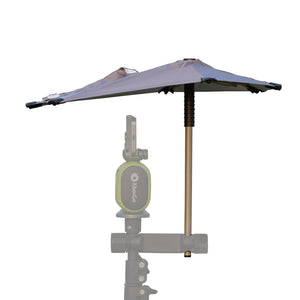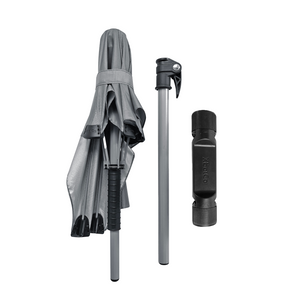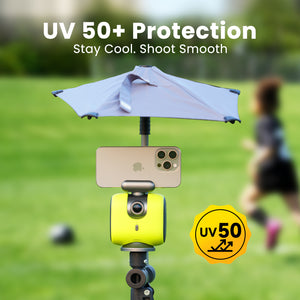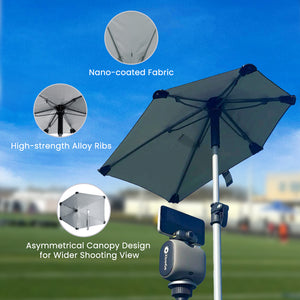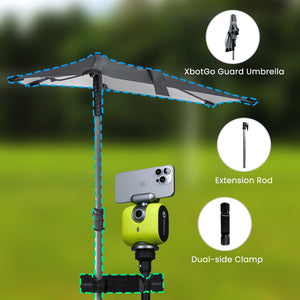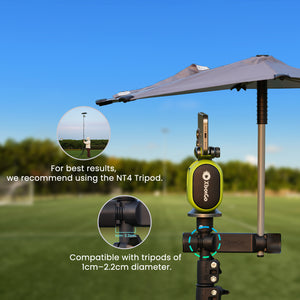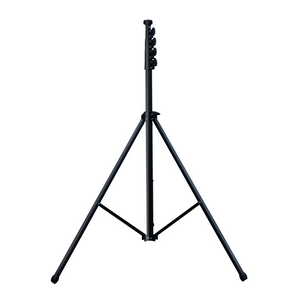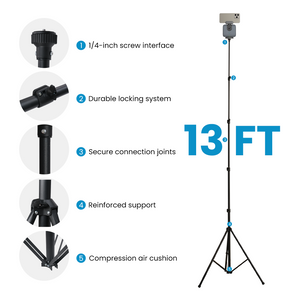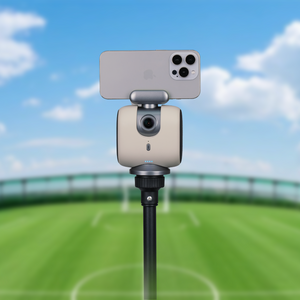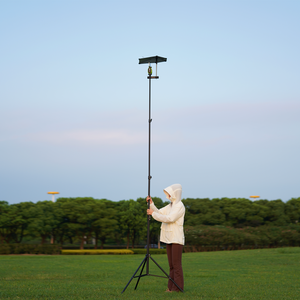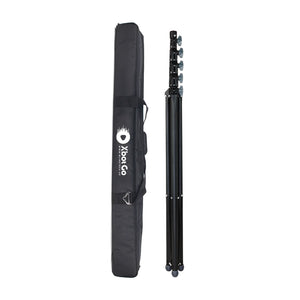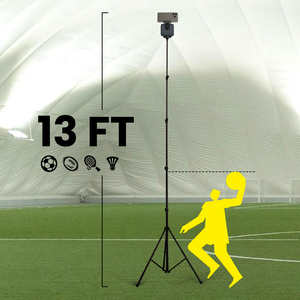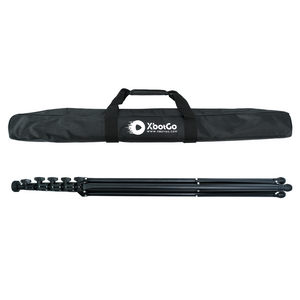XbotGo Chameleon AI Sports Camera
Wie groß ist ein Pickleball-Court? Größe und Aufbau
Egal, ob Sie neu in Amerikas am schnellsten wachsender Sportart sind oder planen, Ihren eigenen Platz zu bauen – das Verständnis der Abmessungen von Pickleball-Plätzen ist Ihr erster Schritt zum Erfolg. Ich habe unzählige Stunden auf Plätzen im ganzen Land verbracht und kann Ihnen sagen, dass es bei der Kenntnis dieser Maße nicht nur darum geht, Regeln einzuhalten – es geht darum, die perfekte Spielumgebung für dieses unglaublich süchtig machende Spiel zu schaffen.
Standardgröße für Pickleball-Plätze: Die magischen Zahlen
Ein Pickleball-Feld ist genau 6 Meter breit und 13 Meter lang . Wenn Ihnen diese Zahlen bekannt vorkommen, haben Sie Recht – es ist identisch mit einem Badminton-Doppelfeld. Diese kompakte Größe ist einer der größten Vorteile von Pickleball. Sie macht es für Spieler jeden Alters zugänglich und ermöglicht es, mehrere Felder dort unterzubringen, wo früher ein Tennisfeld war.
Was viele jedoch nicht wissen: Obwohl das Spielfeld selbst 6 x 13 Meter misst, benötigen Sie für sicheres und angenehmes Spiel mehr Platz. Die USA Pickleball Association empfiehlt eine Mindestspielfläche von 9 Metern Breite und 18 Metern Länge . So haben Sie die nötigen zusätzlichen Meter, um Schläge zu erzielen und Kollisionen zu vermeiden.
Aufteilung der Spielfeldzonen
Die Küche (Nicht-Volleyballzone)
Das Besondere an einem Pickleball-Feld ist die 2,10 Meter breite Nicht-Volley-Zone auf beiden Seiten des Netzes, die liebevoll „die Küche“ genannt wird. Dieser 2,10 mal 6 Meter große Bereich verhindert, dass Spieler am Netz campen und jeden Schlag versenken – eine Regel, die Pickleball zu dem strategischen, zugänglichen Spiel macht, das wir lieben.
Servicebereiche
Hinter der Küche befinden sich auf jeder Seite zwei Aufschlagfelder mit den Maßen 3 Meter Breite und 4,5 Meter Länge. Die Mittellinie teilt diese Felder und schafft so Ziele für diagonale Aufschläge, die jeden Ballwechsel einleiten.
Die Übergangszone
Die kombinierten Aufschlagbereiche bilden die sogenannte Wechselzone – einen 6 x 4,5 Meter großen Bereich, in dem das eigentliche Schachspiel stattfindet. Hier entscheiden Sie, ob Sie zurückbleiben, nach vorne stürmen oder mit einem perfekten Stoppball neu starten.
Netzhöhe und Spezifikationen
Das Netz hat eine Breite von 6,7 Metern und ragt jeweils einen Fuß über die Seitenlinie hinaus. Der entscheidende Punkt: An den Pfosten ist das Netz 91 Zentimeter hoch, in der Mitte jedoch 86 Zentimeter . Dieser Unterschied von 5 Zentimetern mag gering erscheinen, ist aber der Grund, warum erfahrene Spieler in entscheidenden Momenten oft in die Mitte schießen.
Realer Platzbedarf
Nach Gesprächen mit Platzbauern und Hobbygärtnern habe ich gelernt, dass diese Mindestmaße tatsächlich Mindestmaße sind. Für Freizeitspiele sollten Sie eine Gesamtfläche von mindestens 9 x 18 Metern anstreben. Wenn Sie es jedoch ernst meinen oder Wettkampfspiele planen, sollten Sie 10,5 x 19,5 Meter oder, wenn möglich, sogar 12,2 x 19,5 Meter wählen.
Ein Spieler aus Kalifornien berichtete kürzlich von seinen Erfahrungen beim Bau eines Hinterhofplatzes. Ursprünglich hatte er nur das absolute Minimum geplant, entschied sich aber schließlich für 10,3 x 19,3 Meter. „Die beste Entscheidung, die ich je getroffen habe“, sagte er mir. „Diese paar Meter mehr machen den entscheidenden Unterschied, wenn man aggressive Aufschläge zurückschlägt oder Lobs jagt.“
Umbau bestehender Gerichte
Tennisplatzumbauten
Hier wird es interessant. Ein Standard-Tennisplatz bietet Platz für bis zu vier Pickleball-Plätze, die meisten Anlagen entscheiden sich jedoch für zwei oder drei, um einen komfortablen Abstand zu gewährleisten. Die gängigste Anordnung besteht aus zwei nebeneinander angeordneten Plätzen über die gesamte Breite eines Tennisplatzes.
Für die vorübergehende Konvertierung benötigen Sie:
- Spielfeldband oder Kreide für die Linien (5 cm breit, vorzugsweise weiß)
- Ein tragbares Netz oder ein Netzversteller, um die richtige Höhe zu erreichen
- Maßband zur Gewährleistung der Genauigkeit
Einfahrt und Mehrzweckflächen
Ihre Einfahrt könnte bereits ein Pickleball-Platz sein. Eine Standardeinfahrt für zwei Autos bietet oft ausreichend Platz für Freizeitspiele. Ich habe kreative Lösungen mit Basketballplätzen, Parkplätzen und sogar Sackgassen gesehen (natürlich mit den entsprechenden Genehmigungen).
Baueinblicke und Kosten
Basierend auf aktuellen Projekten und dem Feedback der Community können Sie Folgendes erwarten:
Oberflächenmaterialien
Beton bleibt der Goldstandard:
- 4-5 Zoll Dicke empfohlen
- 3500–4500 PSI Stärke
- Nachspannoption zur Rissvermeidung
- Kosten: 15–40 USD pro Quadratfuß
Asphalt bietet eine preisgünstige Alternative, ist jedoch mit Nachteilen verbunden:
- Anfälliger für Risse
- Erfordert häufigere Oberflächenerneuerung
- Nicht empfohlen in extremen Klimazonen
Gesamtprojektkosten
Aktuelle Builds melden diese Bereiche:
- Grundbau des Platzes: 25.000–35.000 $
- Premium-Platz mit Extras: 35.000–50.000 $
- Professionelle Oberflächenbehandlung: 5.000–8.000 $
- Optionale Beleuchtung: über 5.000 USD
- Umzäunung: über 5.000 $
Tipps zur intelligenten Einrichtung
Der Diagonalcheck
Hier ein Profi-Tipp von Platzbauern: Messen Sie Ihren Platz diagonal von Ecke zu Ecke. Ein richtig angelegter Platz sollte in der Diagonale genau 14,75 m messen. Diese schnelle Überprüfung kann Sie vor Fehlern bewahren.
Bewährte Vorgehensweisen zur Linienmarkierung
- Verwenden Sie durchgehend 2 Zoll breite Linien
- Weiß bietet den besten Kontrast
- Für temporäre Plätze eignet sich Malerkrepp gut
- Erwägen Sie unterschiedliche Farben, wenn Sie diese mit anderen Sportarten teilen
Dokumentieren Sie Ihre Spiele
Moderne Technologie hat die Art und Weise, wie wir Pickleball-Spiele aufzeichnen und analysieren, revolutioniert. KI-gestützte Kamerasysteme wie das XbotGo Chameleon können Spieler automatisch verfolgen und Highlight-Videos erstellen, ohne dass jemand die Kamera bedienen muss. Diese Systeme werden außerhalb des Spielfelds montiert und verfolgen das Geschehen auf dem gesamten Spielfeld. Perfekt, um Ihre Technik zu analysieren oder Ihre beeindruckenden Ballwechsel mit Freunden zu teilen.
Häufige Fehler, die Sie vermeiden sollten
Unzureichende Freigabe
Der größte Fehler? Platzmangel rund um das Spielfeld. Diese Mindestabstände gibt es aus gutem Grund. Ich habe Spieler gesehen, die sich auf Spielfeldern mit nur 60 bis 90 cm Abstand zur Grundlinie verletzt haben – machen Sie diesen Fehler nicht.
Falsche Netzhöhe
Viele selbstgebaute Plätze leiden unter einem unsachgemäßen Netzaufbau. Achten Sie immer auf eine Mittelhöhe von 86 cm. Ein zu hohes Netz verändert die gesamte Spieldynamik.
Ignorieren lokaler Vorschriften
Überprüfen Sie vor dem Spatenstich:
- Zonenbeschränkungen
- HOA-Regeln
- Rückschlaganforderungen
- Lärmschutzverordnungen
Begrenzten Platz optimal nutzen
Nicht jeder hat Platz für einen ganzen Platz, aber das bedeutet nicht, dass Sie nicht spielen können. Betrachten Sie diese Alternativen:
Modifizierte Gerichte
- Dünne Singles : Verwenden Sie zum Üben eine Breite von 10 Fuß
- Verkürzte Plätze : Länge proportional reduzieren
- Übungswände : Ideal zum Üben ohne Partner
Temporäre Lösungen
Einige meiner Lieblingsspiele fanden auf provisorischen Plätzen statt. Nutze, was du hast, aber stelle immer die Sicherheit an erste Stelle. Ein etwas kleinerer Platz mit ausreichend Platz ist besser als ein Platz in Standardgröße, der in einen unsicheren Raum gequetscht wurde.
Das Fazit
Ein Pickleball-Court benötigt eine Spielfläche von 6 x 13 Metern. Erfolgreiche Courts erfordern jedoch eine durchdachte Planung, die über die Grundmaße hinausgeht. Egal, ob Sie Linien auf einem Tennisplatz ziehen, ein Paradies im Garten gestalten oder einfach nur versuchen, das Spiel besser zu verstehen: Denken Sie daran, dass diese zusätzlichen Sicherheitsreserven nicht optional sind – sie sind unerlässlich für das rasante und süchtig machende Spiel, das wir alle lieben.
Das Schöne an Pickleball ist seine Anpassungsfähigkeit. Zwar sind die offiziellen Maße wichtig, aber dank der einladenden Natur des Sports kannst du fast überall mit einer ebenen Fläche, einem Netz und ein paar Grundlinien spielen. Denk dran: Sobald du anfängst, wirst du wahrscheinlich schneller als gedacht einen großen Platz wollen. Glaub mir – Pickleball hat die Fähigkeit, dein Leben auf die bestmögliche Weise zu übernehmen.
XbotGo Chameleon AI Sports Camera
Capture every moment with AI-powered tracking. Perfect for coaches, parents, and athletes who want seamless footage without manual filming.







 Soccer
Soccer Basketball
Basketball Ice Hockey
Ice Hockey Rugby
Rugby










